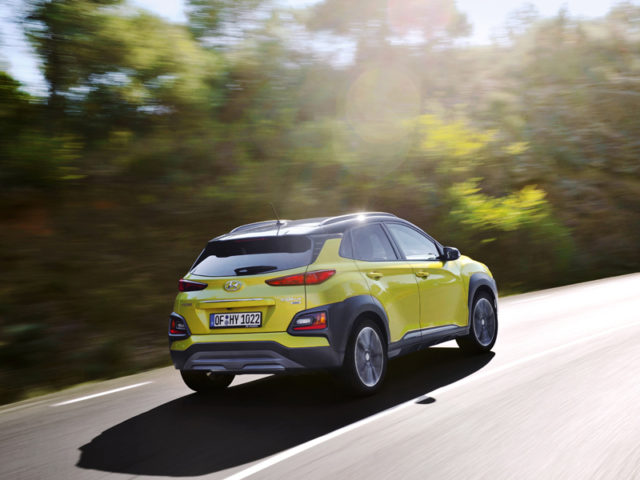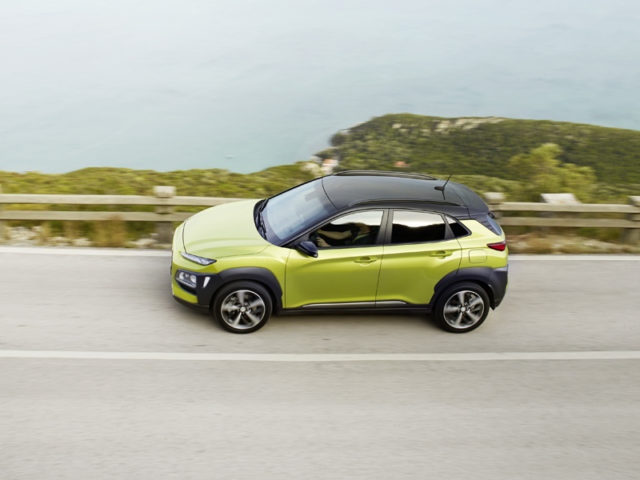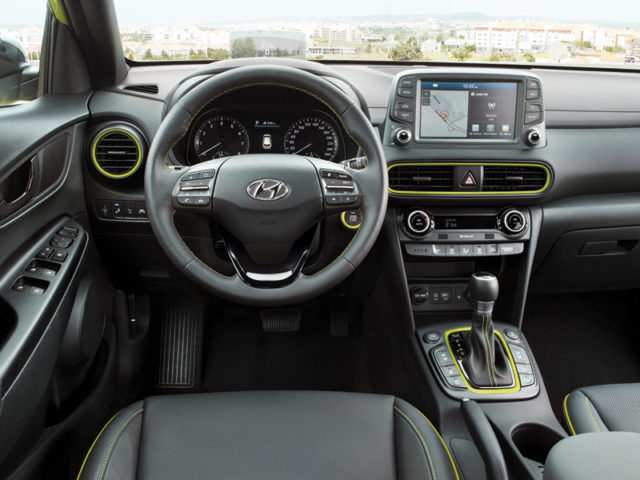Road Test: Hyundai Kona
Beneath that bold design, the Kona is a game-changer in waiting, reckons Alex Grant.
SECTOR Compact SUV PRICE €17,500-€28,000 FUEL 5.2-6.7l/100km CO2 117-153g/km
Europe’s appetite for SUVs shows no sign of slowing yet; a record 4.56m were registered across the region last year, according to JATO data, accounting for one in three new passenger cars and a 20% year-on-year rise. So a portfolio of soft-roaders has become a prerequisite, neatly filling the gaps between the traditional segments for image and practicality-conscious drivers.
This can be a double-edged sword. Hyundai is aiming the Kona at the supermini-derived SUV segment, positioned between the i20 and i30 in its line-up and competing in an increasingly crowded part of the market. But, even with newcomers arriving ever few weeks, this one has some interesting tricks up its sleeve to help stand out.
Importantly, distinctive styling comes high on that list. With a hint of Iron Man up front, a choice of bold and two-tone colours to contrast against the abundant black body cladding, and large wheels pushed out to the corners, the Kona sits at the sporty end of a segment where some rivals are more like body-kitted MPVs.
Luckily this hasn’t come at the expense of practicality. There’s no sliding rear bench or folding passenger seat as on some competitors, but the Kona offers space for four adults (five at a push) and a competitively-sized boot for their luggage. You’ll get bigger suitcases into an i30, but this offers most of the day-to-day flexibility of a larger hatchback in a smaller overall package. As in the i30, there’s an intuitive touchscreen infotainment system with Android Auto and Apple CarPlay app streaming capability.
The only downside is, it’s quite spec-sensitive. Those large wheel arches and the raised ride height leave it prone to looking under-wheeled, and it’s not overly well suited to shades of grey. And, though the option of colour-coding the seat belts, stitching and parts of the dashboard in lime green, orange or red sounds gaudy, it does a lot to liven up what’s otherwise quite a drab, dark and plasticky cabin.
Hyundai is offering two turbocharged petrol engines from launch. The 120hp 1.0-litre three-cylinder is the likely big-seller; a gravelly-sounding but lively performer, with a good spread of pulling power fuel consumption of around 6.5l/100km at highway speeds. Opting up to the 177hp 1.6-litre engine adds four-wheel drive and a seven-speed dual-clutch automatic transmission, but 153g/km CO2 emissions mean it’s unlikely to be a mainstream fleet choice.
Alternatives are coming soon; two new 1.6-litre diesel engines with 115hp and 136hp arrive this summer, the latter with four-wheel drive as an option, and should take CO2 under 110g/km. Perhaps even more significant are the two electric versions coming later this year, one of which will offer a range of almost 300 miles, which makes this a game-changer in its segment.
In the meantime, it’s a competitive addition to a close-fought part of the market. Distinctive, good to drive (if a little firm over rough surfaces) and with a little added practicality for upsizing supermini drivers, it’s got all the right boxes ticked to capitalise on that unending SUV demand.
What we think
The Kona is an eye-catching addition to a segment where styling counts, but diesel and electric versions can’t come soon enough for fleets.











